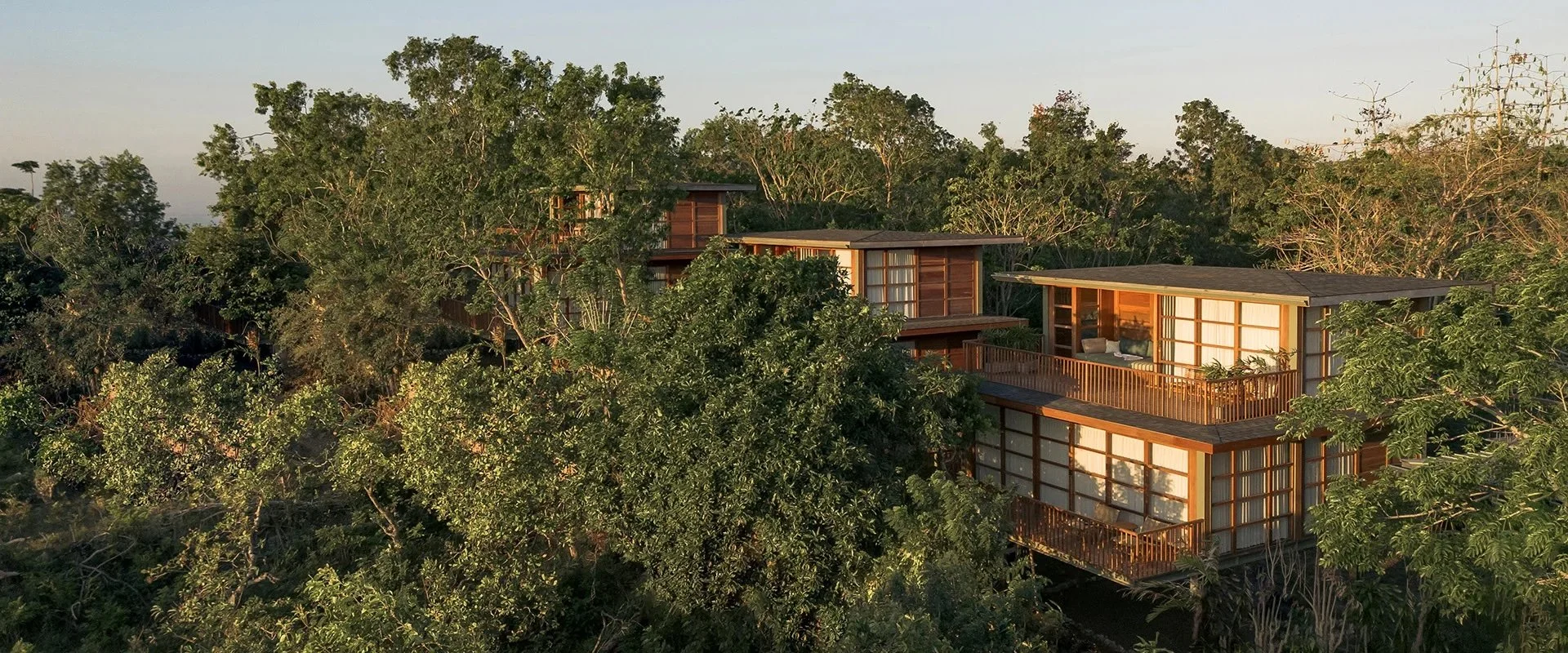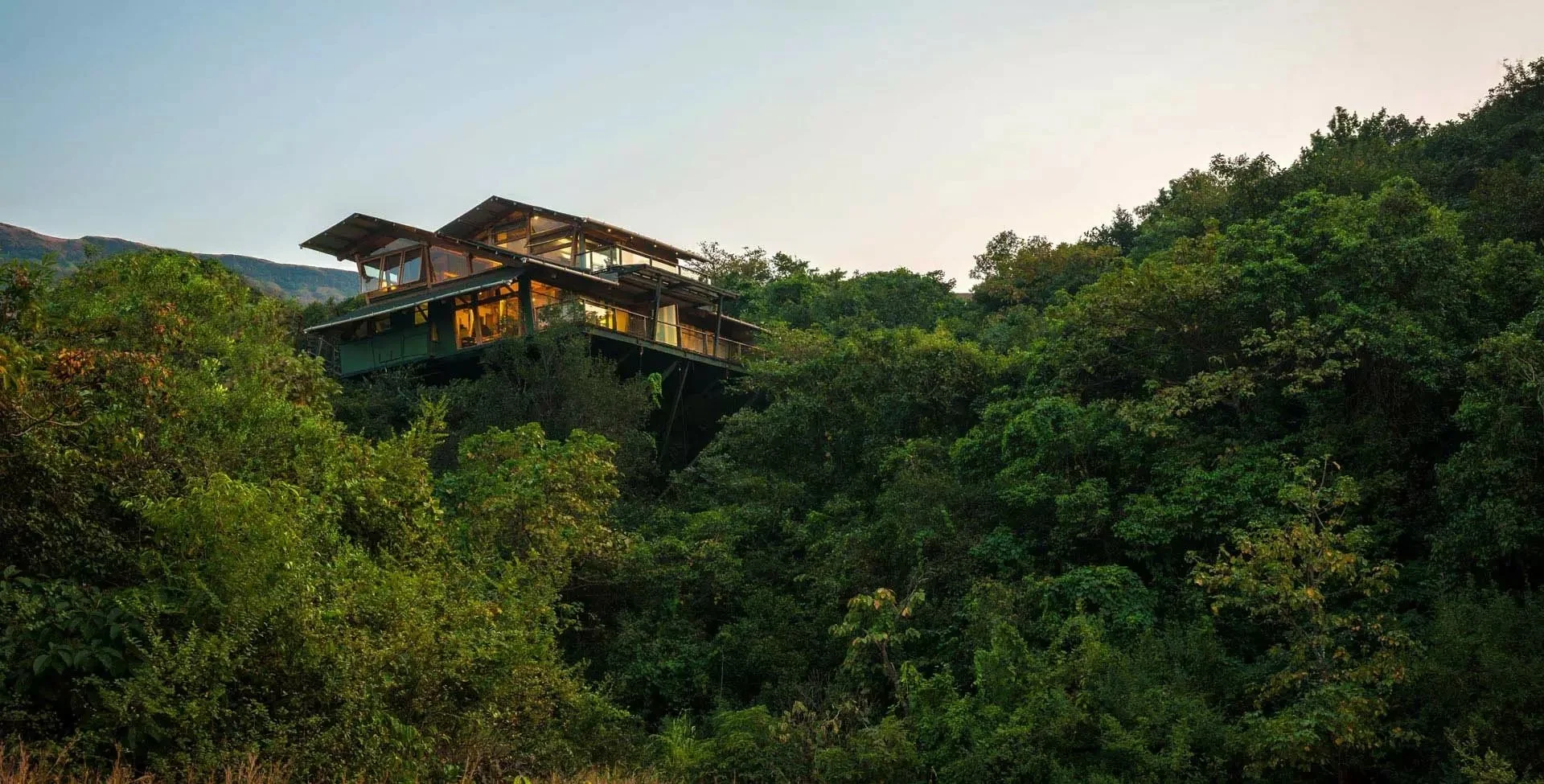Low-Impact Travel in Asia: What Does It Mean, and Who Stands to Gain?
Grun Resort Uluwatu
Once a niche concept, low-impact travel has recently become a rallying cry among sustainability advocates in the tourism industry.
At its core, the movement has long championed reducing emissions through low-carbon mobility, which is a valid starting point, given that transport-related CO2 emissions of the tourism sector account for 22% of all emissions from transport, according to the UNWTO.
However, the definition of low-carbon or low-impact travel is evolving. In today’s climate-conscious landscape, low-impact travel can no longer rely solely on swapping flights for trains or diesel vans for EVs — especially in a vast continent like Asia, where building the cross-border infrastructure for rail and electric mobility requires large-scale, long-term inter-government investment.
Therefore increasingly, in response to the escalating climate crisis, the movement now calls for a more practical and hands-on approach: one that accounts for how we move, yes, but also how we stay, eat, and engage — identifying opportunities across the entire travel journey to lower emissions.
This systems-level mindset reflects a growing consensus across the sector, including from speakers Shannon Guihan of The Travel Corporation, Michele Harvey of Butterfield & Robinson, and Susanne Andersson of Visit Sweden at the recent The “Better” Choice: Making Low-Carbon Travel the Easy Option webinar hosted by Sustainable Travel International.
As Paloma Zapata, CEO of Sustainable Travel International, aptly noted, “[travelers] aren’t going to buy spreadsheets [showing their carbon emissions], they’re going to buy experiences.” In other words, designing low-carbon itineraries isn’t enough. The real challenge — and opportunity — lies in curating experiences that are both climate-smart and emotionally compelling.
This article explores the next chapter of low-impact travel in Asia — not just as a climate solution, but as a lever for value creation across communities, guest experiences, and long-term investment.
Beyond Carbon Funnel: A Holistic Redefinition
The emerging wave of low-impact travel goes far beyond low-carbon transport.
Increasingly, hospitality players, tour operators, and destination managers in Asia and beyond are embracing a more systemic framework — one that reduces environmental pressure and enhances traveler satisfaction.
Hotels adopt low-energy operations powered by solar panels, biodigesters, and passive cooling systems rooted in bioclimatic design.
Tour operators redesign itineraries to limit transfers and emphasize slow, meaningful movement. Whether that’s walking, biking, or taking scenic rail routes, the result is lower emissions and deeper cultural immersion.
Destinations can promote off-season travel and lesser-known destinations to alleviate the strain of overtourism.
Food systems are being rethought too, with localized food sourcing and waste reduction strategies gaining traction.
Rethinking Low-Impact Accommodation: Beyond Solar Panels and Glamping Tropes
Low-impact accommodation has come a long way from its rustic, back-to-basics origins. While renewable energy transition and sustainable design remain foundational pillars, the most forward-thinking properties in Asia are showing that low-carbon hospitality can also be deeply enriching — not just for the planet, but for the guest experience.
In recent years, the glamping renaissance has offered a compelling case in point. Award-winning tented retreats like the Bill Bensley-designed Shina Mani Wild and Cardamom Tented Camp are redefining luxury through a lens of light-touch design and deep nature immersion. Both properties minimize environmental disruption while delivering high-end, story-rich stays in remote jungle settings.
Though low-impact accommodations may appear simple on the surface, they are, in fact, built on specialized expertise. Creating comfort in off-grid, natural environments requires advanced design thinking, engineering precision, and long-term environmental planning.
As in the cases of the aforementioned properties, developers had to take into account everything from seasonal weather patterns to the availability of skilled local labor and the logistics of remote supply chains. Energy systems, water management, and waste treatment must often function independently of municipal infrastructure — relying instead on integrated off-grid solutions and circular design.
Cardamom Tented Camp.
Asia Pacific Outdoor Lodging Association (APOLA), along with innovators like Escape Nomade, LB Aresia, and Cloud Collective, are championing the evolution of sustainable outdoor accommodations, from mobile tents to semi-permanent eco-structures that blend with the landscape.
Lazy Coconut Phuket (L) and Kapuhala Koh Samui (R) in Thailand with tents by Escape Nomade
Treehouses, once a novelty, have also matured into a category of their own within low-impact lodging.
Properties such as Keemala in Phuket, Bambu Indah in Bali, Grun Resorts in Indonesia, and The Machan in India offer whimsical, elevated stays that connect guests to their surroundings while drastically lowering the built footprint.
These properties show that sustainability can inspire creativity rather than limit it.
Keemala in Phuket, Thailand (L); The Machan in India (R)
Low-Impact Travel Unlocks Elevated, Immersive Experiences
Low-impact travel isn’t about cutting corners; it’s about deepening the journey.
Michele Harvey highlighted in the webinar that Butterfield & Robinson’s Japan Walking and Biking Tours are a case in point. These small-group, foot-powered itineraries allow travelers to experience Japan’s countryside and spiritual sites without the footprint of motorized transport. It combines luxury with low-impact design, offering local ryokan stays, regional cuisine, and train-based transfers.
Biking tours in Cambodia (L), Vietnam (M), and Japan (R) by Butterfield & Robinson
In Bali, the Fireflies Night Safari experience by Seek Sophie offers a quiet counterpoint to the island’s busy nightlife by connecting travelers with local conservationists, making the experience as educational as it is enchanting.
Astungkara Trails gives nature-loving travelers a chance to escape the tourist crowds and immerse in the authentic essence of the islands of the Gods with tailored walking getaways in northern Bali. Revenues finance local initiatives such as food forests, youth farming programs, and the preservation of Bali’s cultural and culinary heritage.
Hiking in northern Bali with Astungkara Trails
In Thailand, travel companies such as Local Alike are reimagining slow and locally-benefiting tourism. Their community-based travel experiences connect visitors with minority hill tribes, allowing locals to preserve cultural heritage and benefit economically, while reducing the strain on over-visited destinations.
The Broader Value Proposition: Who Truly Benefits in Addition to the Environment?
The benefits of low-impact travel are multidimensional and go far beyond carbon reduction.
Local communities gain direct economic value as traveler spending goes to family-run homestays, local guides, and small-scale food producers. In Indonesia, more than 1,200 villages have joined the Desa Wisata program, offering cultural and nature-based experiences that generate grassroots income and ease overcrowding in mainstream tourism hotspots.
Travelers also benefit by gaining access to more meaningful and immersive experiences. Booking.com’s 2024 Sustainable Travel Report found that 84% of travelers now consider sustainability important while Traveloka echoes this shift with 80% of APAC travelers being open to choosing sustainable options.
Forward-thinking destination management models are also earning dividends. Bhutan’s high-value, low-volume strategy has helped the country remain carbon-negative, ensure high visitor spending, and preserve its cultural and environmental assets.
Hospitality investors stand to benefit as well. Brands like Soneva and Pan Pacific, which integrate solar energy, water and waste recycling, and local sourcing, command premium pricing and enjoy strong brand loyalty among eco-conscious travelers.
The Business Case for Scaling Up
As regulatory frameworks tighten — from Singapore’s Green Plan 2030 to the EU’s Corporate Sustainability Reporting Directive — those who proactively decarbonize and localize their value chains will stay ahead of the curve.
In many Asian destinations, where tourism remains a pillar of the economy, the risks of inaction are rising just as fast as the sea levels. Low-impact travel provides a roadmap and economic lifeline.
Key Takeaways
Low-impact travel goes beyond mobility. When this approach is applied to accommodations, food sourcing, and operations, all stakeholders stand to benefit — from rural communities and travelers to destination managers and investors.
Scaling low-impact travel has enormous business opportunities, particularly in developing next-gen accommodation, authentic itineraries, and regenerative culinary experiences that are as profitable as they are planet-friendly.


















